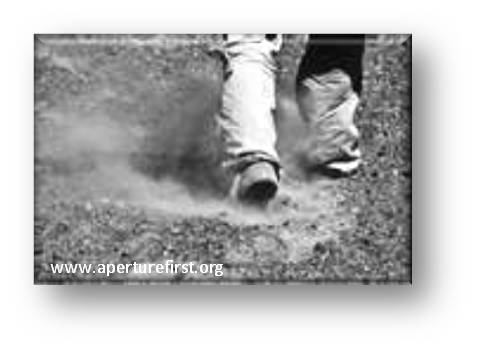by Dale Elizabeth Carey
 Countries and states are preparing for anticipated problems caused by climate change. Nine states across the United States have action plans for impacts brought about by greenhouse gas emissions, including “extreme heat, air pollution, disease, drought, and flooding caused by storms and rising sea levels.” (Zimmerman, 2011)
Countries and states are preparing for anticipated problems caused by climate change. Nine states across the United States have action plans for impacts brought about by greenhouse gas emissions, including “extreme heat, air pollution, disease, drought, and flooding caused by storms and rising sea levels.” (Zimmerman, 2011)
In California, climate change health effects of concern are West Nile virus, asthma and heat-related illnesses. In some California counties, temperatures are expected to rise by as much as 9 degrees by the end of the century. Low-income communities, which are more likely to be located in polluted areas, will suffer greater due to lack of air conditioning, making the population more susceptible to “heat exhaustion, heat stroke, cardiovascular and kidney disease” (Zimmerman, 2011). Also, rising temperatures will make these areas more susceptible to drought, smog and Dengue Fever (caused by two species of mosquitoes). Additionally, asthma attacks are expected rise brought on by smog and wildfire smoke.
In the western United States (US), temperature data has been tracked for each state. Temperatures were tracked for 1961-1990 and compared to those for 2000 – 2009. It was found that those states had experienced more days of extreme heat and drought for the period 2000 – 2009. California is preparing for climate change by:
- Stepping up air pollution reduction in “toxic hot spots”
- Expanding the electronic reporting of asthma
- Developing a heat warning system
- Planting trees for shade and to reduce heat reflection from pavement
- Preparing for power outages
Malaria and Dengue Fever are increasingly cause for concern throughout the world due to high temperature and long rainy seasons. In the United States, “those suffering the most from mosquito-borne diseases recorded nationwide in the first six months of this year, have been 10-24 year-olds who account for 52% of the known 23,324 cases and 13 deaths” (Sounding a Health Alert, 2011).
Typically malaria and Dengue Fever outbreaks tend to be severe and unpredictable. Dengue Fever infects an estimated 220 million per year worldwide. It seems that warmer weather allows the mosquito to thrive.
 In the United Kingdom, there has been a recorded upsurge in Avian malaria (30% in 2011 as compared to 10% in 1990) which is killing off sparrows, chaffinches, owls and nightingales. This has been attributed to a warmer and wetter climate. The change in weather is favorable to the colonization of some insects that are bearing disease. (Malaria Killing off Sparrows and Owls as Mosquitoes Invade, 2011)
In the United Kingdom, there has been a recorded upsurge in Avian malaria (30% in 2011 as compared to 10% in 1990) which is killing off sparrows, chaffinches, owls and nightingales. This has been attributed to a warmer and wetter climate. The change in weather is favorable to the colonization of some insects that are bearing disease. (Malaria Killing off Sparrows and Owls as Mosquitoes Invade, 2011)
Even in the Indian Himalayas, the spread of malaria is likely. The Indian Network of Climate Change Assessment program analyzed temperature and relative humidity scenarios across India. The study concluded that the “climate assessment needs to be integrated with socio-economic factors, as transmission of malaria is also driven by crop practices, water availability, urbanization, and interventions such as bed nets and insecticide sprays.” (T.V. Padma, 2011).
 Microbes (bacteria, fungal spores and tiny algae) traveling the Earth are also of concern. Microbes are now believed to play a role in “creating clouds, causing rain, spreading disease and even changing climate (F. Pearce, 2011).” Believe it or not, African ‘rain dances’ stir airborne microbes up. It also was found that tea pickers in Kenya are causing hail by kicking up bits of leaf into the air.
Microbes (bacteria, fungal spores and tiny algae) traveling the Earth are also of concern. Microbes are now believed to play a role in “creating clouds, causing rain, spreading disease and even changing climate (F. Pearce, 2011).” Believe it or not, African ‘rain dances’ stir airborne microbes up. It also was found that tea pickers in Kenya are causing hail by kicking up bits of leaf into the air.
“The relationship between weather, seasons and cholera is long-established. Sea surface height, sea surface temperature and the concentration of chlorophyll in the ocean have been shown to be predictive” of the disease. (Shurkin, J., 2011). In developing areas of the world, it has been found that cholera (mainly caused by human feces in drinking water) is affected by slight variations in temperature or rainfall. Thus, global warming will likely increase the frequency of epidemics. The death rate for this disease can be up to 50 percent of those infected.
“We are constantly being rained on by bio-detritus from around the world — from dandruff and algae to pollen and fungi, bacteria, and viruses.” Ruprecht Jaenicke of the Institute of Atmospheric Physics at the University of Mainz in Germany analyzed air samples from remote regions. He concluded in Science in 2005 that as much as a quarter of the aerosols in the atmosphere are of biological rather than geological origin. Desertification on one continent can kill coral reefs on another. (F. Pearce, 2011) More dust in the atmosphere is caused by industrial emissions, deforestation, plowing and desertification. It may very well be that bugs in the air may influence global climate.
In summary, if we, as the human race, continue to stay on the present course, public health systems need to focus on changing climate. Preparations need to include education in energy, water, auto emissions and mosquito control with special focus on those who live in poverty.
References:
Author Unknown. Sounding a Health Alert, Accessed 8 September, 2011. http://www.bangkokpost.com/news/local/248382/sounding-a-health-alert
Cohen, T. Malaria is killing off our sparrows and owls as mosquitoes invade. Accessed 8 September, 2011. http://www.dailymail.co.uk/sciencetech/article-2025988/Malaria-killing-sparrows-owls-mosquitoes-invade.html#ixzz1Vr0DfSr4
Padma, T. Climate change ‘to increase malaria’ in Indian Himalayas. Accessed 8 September, 2011. http://www.trust.org/alertnet/news/climate-change-to-increase-malaria-in-indian-himalayas
Pearce, F. The Long Strange Journey Of Earth’s Traveling Microbes. Accessed 8 September, 2011. http://e360.yale.edu/feature/the_long_strange_journey_of_earths_traveling_microbes/2436/
Shurkin, J. Weather Changes May Predict Cholera Outbreaks. Accessed 8 September, 2011. http://www.usnews.com/science/articles/2011/06/13/weather-changes-may-predict-cholera-outbreaks
Walsh, B. Dengue Fever Creeps Back Into the U.S. — and Climate Change Isn’t Helping Accessed 8 September, 2011. http://healthland.time.com/2011/06/10/dengue-fever-creeps-back-into-the-u-s-%E2%80%94-and-climate-change-isnt-helping/
Zimmerman, J. INLAND: Website details climate change health effects. Accessed 8 September, 2011. http://www.pe.com/localnews/stories/PE_News_Local_D_heat04.2e5948f.html

I like the valuable information you provide in your articles. I’ll bookmark your blog and check again here frequently. I am quite sure I will learn plenty of new stuff right here! Look forward to checking out your some of your posts again.
It sure has. Think our blog tries to explain why.